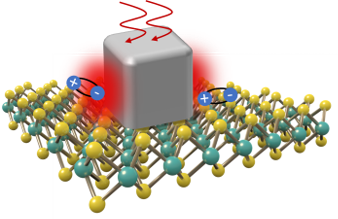(molecular nanoelectronics)
Molecular nanoelectronics is the basis of nanocircuits and making electronic nanochips and (nanotransistors)
Researcher and author: Dr. ( Afshin Rashid)
Note: nano-microelectronics deals with new methods for making nano-transistors on a small scale, whose dimensions are in the range of tens of nanometers, which is derived from the science called nanotechnology.
Unlike today's nanotransistors, which behave based on the movement of a mass of electrons in matter, new devices follow quantum mechanical phenomena at the nanoscale, in which the discrete nature of electrons cannot be ignored. By reducing all the horizontal and vertical dimensions of the transistor, the electric charge density in different areas of the nano-transistor increases, or in other words, the number of electric charges per unit area of the nano-transistor increases. This event has two negative consequences: First, with the increase in electric charge density, the possibility of electric charge discharge from the insulating areas of the transistor increases , and this event causes damage to the transistor and its failure. This event is similar to the discharge of excess electric charge between the cloud and the ground in the phenomenon of lightning, which causes the ionization of air molecules into negative and positive ions. Secondly With the increase of the electric charge density, the electrons may leave the range of the radius of one atom and enter the range of the radius of the adjacent atom under the influence of repulsive or abduction forces whose value has now increased. This is called tunneling in quantum physics. Electron tunneling from one atom to the adjacent atom is a phenomenon that happens a lot between electrons in small dimensions. This phenomenon is the basis of the work of some electronic components and some nanoscopes. But in nanotransistor, this phenomenon is not a useful phenomenon, because electron tunneling from one atom to the adjacent atom may continue and cause an electric current. Although this electric current may be very small, but because it is unwanted and unanticipated, it behaves like a leaky path for electric current. and changes the electrical behavior of the nano-transistor.
We divide these devices into three parts:
1) Carbon nanotube transistors
2) single electron devices
3) molecular nanoelectronic devices
The use of a nanowire as the metal-oxide-semiconductor field of a nano-effect transistor channel can enable a structure around a gate to provide excellent electrostatic gate control over the channel to reduce short-channel effects. which has been in the structure of nano circuits and the basis of making electronic nano chips for computing devices.





